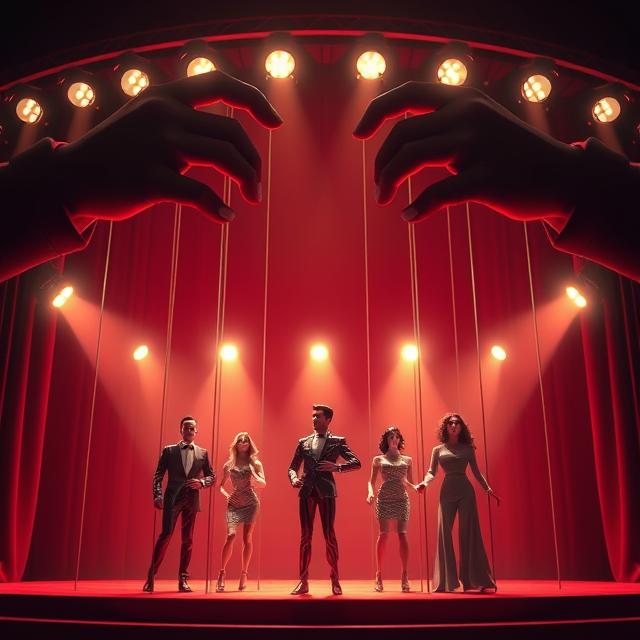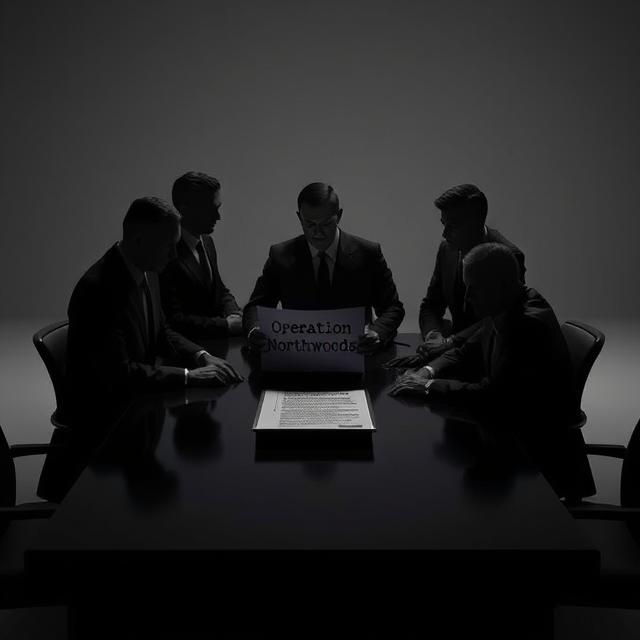Hollywood, the glittering epicenter of global entertainment, has always been a source of fascination and scrutiny. Its power to shape culture, influence trends, and project narratives onto the world stage makes it a natural target for suspicion and speculation. Over the years, a pervasive undercurrent of conspiracy theories has emerged, suggesting that beneath the dazzling facade of fame and fortune lies a darker reality: a world controlled by secret societies wielding immense influence, pulling the strings of actors, musicians, and filmmakers like marionettes. These theories posit that these clandestine groups, often linked to ancient mystery schools, occult practices, or shadowy global elites, dictate who rises to stardom and what messages are disseminated through the entertainment we consume. But how did these beliefs take root, what “evidence” is presented to support them, and what are the underlying anxieties that keep these theories alive? Let us pull back the curtain on the captivating, if often unsubstantiated, world of Hollywood’s secret society conspiracies.
The idea of secret societies manipulating world events is not unique to Hollywood. Throughout history, clandestine groups like the Freemasons, the Illuminati, and various Rosicrucian orders have been the subject of both genuine historical study and elaborate conspiracy theories. When applied to the entertainment industry, these pre-existing frameworks of hidden power find a fertile landscape in the inherent secrecy and carefully constructed image-making that defines Hollywood.
One of the primary catalysts for these theories is the perceived symbolism embedded in films, music videos, and celebrity imagery. Believers often point to recurring motifs, geometric patterns, and specific gestures as evidence of an occult language or a system of coded messages intended for those “in the know” or as a form of subliminal influence on the wider audience. Eyes, pyramids, checkerboard patterns, and certain hand signs are frequently cited as examples of this alleged symbolic language, linked to various secret societies and their purported ideologies.
The rapid rise to fame and fortune experienced by some individuals in Hollywood also fuels suspicion. Conspiracy theorists suggest that talent alone is not enough, and that a chosen few are fast-tracked to stardom due to their allegiance to or acceptance by these secret societies. This narrative often portrays these societies as gatekeepers, controlling who gets opportunities and who remains in obscurity.
The content of some films and music is also analyzed through this conspiratorial lens. Themes of control, dystopian futures, and specific social or political messages are sometimes interpreted as propaganda or the subtle dissemination of an agenda dictated by these hidden powers. The argument is often made that these societies use the persuasive power of entertainment to shape public opinion and further their own goals.
The behavior and personal lives of some celebrities are also scrutinized for alleged signs of their involvement. Unusual career choices, sudden changes in public persona, or even perceived “scripted” narratives surrounding their lives are sometimes cited as evidence of their being controlled or manipulated by these unseen forces.
The lack of concrete, verifiable evidence is a significant challenge for these theories. Most of the “proof” relies on interpretation of symbolism and circumstantial connections. Skeptics argue that the perceived symbols can often be attributed to artistic expression, coincidence, or the natural recurrence of certain motifs in art and design. They also point out that attributing success solely to secret society influence often dismisses the hard work, talent, and marketability of the individuals involved.
However, the allure of these theories persists, perhaps because they tap into several deep-seated cultural anxieties:
- Distrust of Elites: There is a natural suspicion of powerful and influential groups, particularly those that operate behind closed doors. Hollywood, with its concentration of wealth and fame, becomes a prime target for this distrust.
- Fear of Manipulation: The entertainment industry’s ability to influence thoughts and emotions is undeniable. The idea that this power could be wielded by a hidden agenda is a source of concern for some.
- Desire for Hidden Knowledge: Conspiracy theories often offer a sense of exclusive insight, the feeling of knowing a “truth” that is hidden from the masses. This can be psychologically appealing.
- The Illusion of Control: In a complex and often chaotic world, the idea that a secret group is orchestrating events can provide a sense of order, even if that order is perceived as sinister.
The internet has played a crucial role in the proliferation and amplification of Hollywood secret society theories. Online forums, videos, and websites dedicated to these beliefs dissect every frame of a music video or every scene of a film, finding alleged “proof” of hidden symbolism and control. The echo chambers of the internet can reinforce these beliefs, making it difficult for individuals to encounter dissenting viewpoints.
It’s important to acknowledge the power dynamics within Hollywood. Like any industry, it has its hierarchies, power brokers, and informal networks. However, attributing these dynamics solely to the control of a unified cabal of secret societies lacks verifiable evidence. The industry is driven by a complex interplay of creative vision, financial investment, market trends, and individual ambition.
The “puppet” analogy is a powerful one, suggesting a complete lack of agency on the part of celebrities. However, many stars have demonstrated significant control over their careers and public image, often using their platforms to express personal beliefs and even challenge established norms. Attributing their success and actions entirely to the dictates of a secret society often oversimplifies the complexities of individual careers and the industry itself.
Ultimately, the theories surrounding Hollywood’s secret societies and their alleged control over its stars remain firmly in the realm of speculation. While the entertainment industry undoubtedly holds significant power and influence, attributing its workings to a shadowy, unified cabal lacks the concrete evidence required for factual validation. These theories, however, continue to captivate and resonate, fueled by cultural anxieties and the enduring human fascination with hidden power and the secrets that might lie behind the dazzling facade of fame. The silver screen, in this context, becomes not just a source of entertainment, but a potential canvas for hidden agendas, forever prompting the question: what truly lies behind the image?
Want to explore the shadows even deeper? For more chilling cases like this, visit SinisterArchive.com, where the legends are real.



